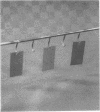Abstract
Bacillus subtilis var. niger spores were tested for dry-heat resistance on stainless-steel strips hung in an oven. Heat resistance was dependent on the relative humidity before and during treatment, which in turn affected the water content of the spores. Higher humidities increased the heat resistance of the spores. D-values ranged from 16.1 min for spores conditioned at <2% relative humidity (RH) and treated at 0.34% RH to 37.6 min for spores conditioned at 89% RH and treated at 1.1% RH. The y-intercept of the regression line ranged from 6.94 × 104 for spores conditioned and treated at the low humidities to 2.00 × 105 for spores conditioned at 89% RH and treated at 0.34% RH. For a constant value of N0, the y-intercept appears to be lowered by low-humidity conditions. The statistic log y0/log N0 is used to measure the downward displacement of the regression line. Values obtained in this experiment range from 0.90 for spores conditioned at <2% RH and treated at 0.34% RH to 1.04 for spores conditioned at <2% RH and treated at 1.1% RH. A combination of linear regression and analysis of variance methods was used for data analysis. The former estimates D-values and y-intercepts, whereas the latter is sensitive to differences between treatments.
Full text
PDF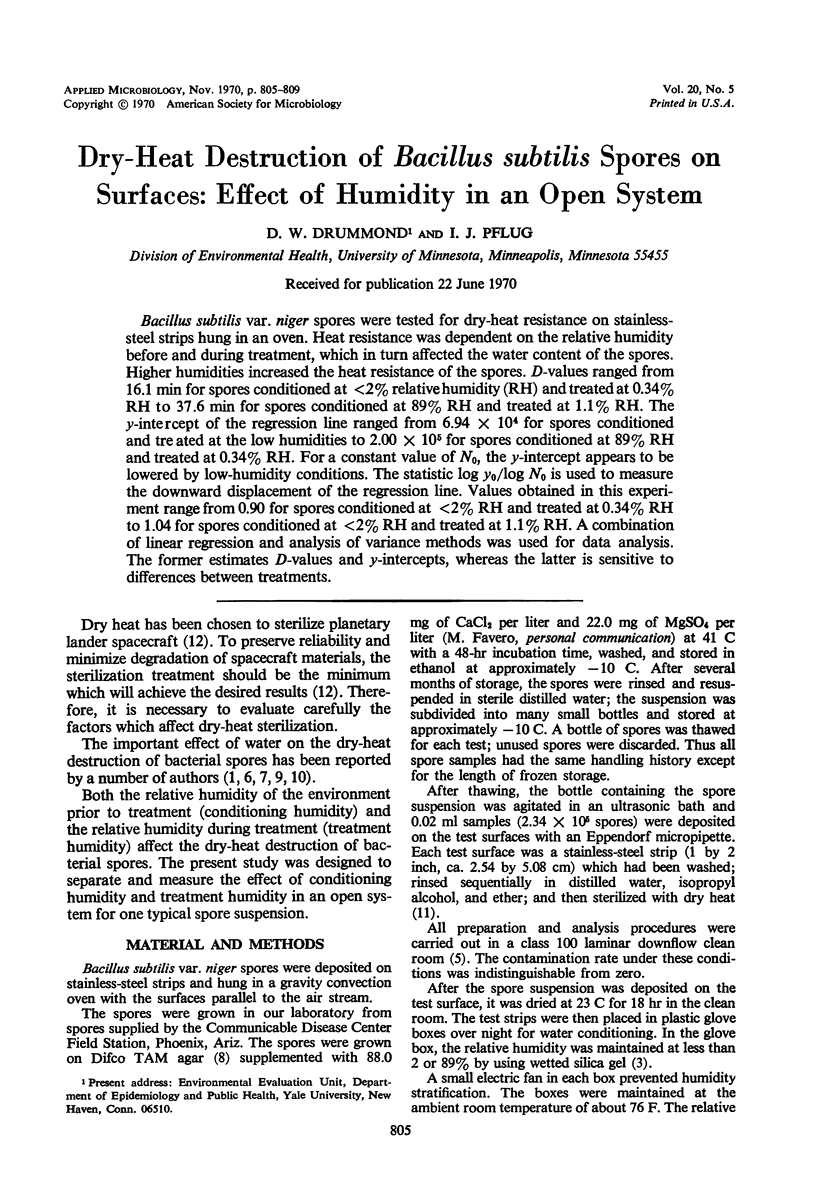
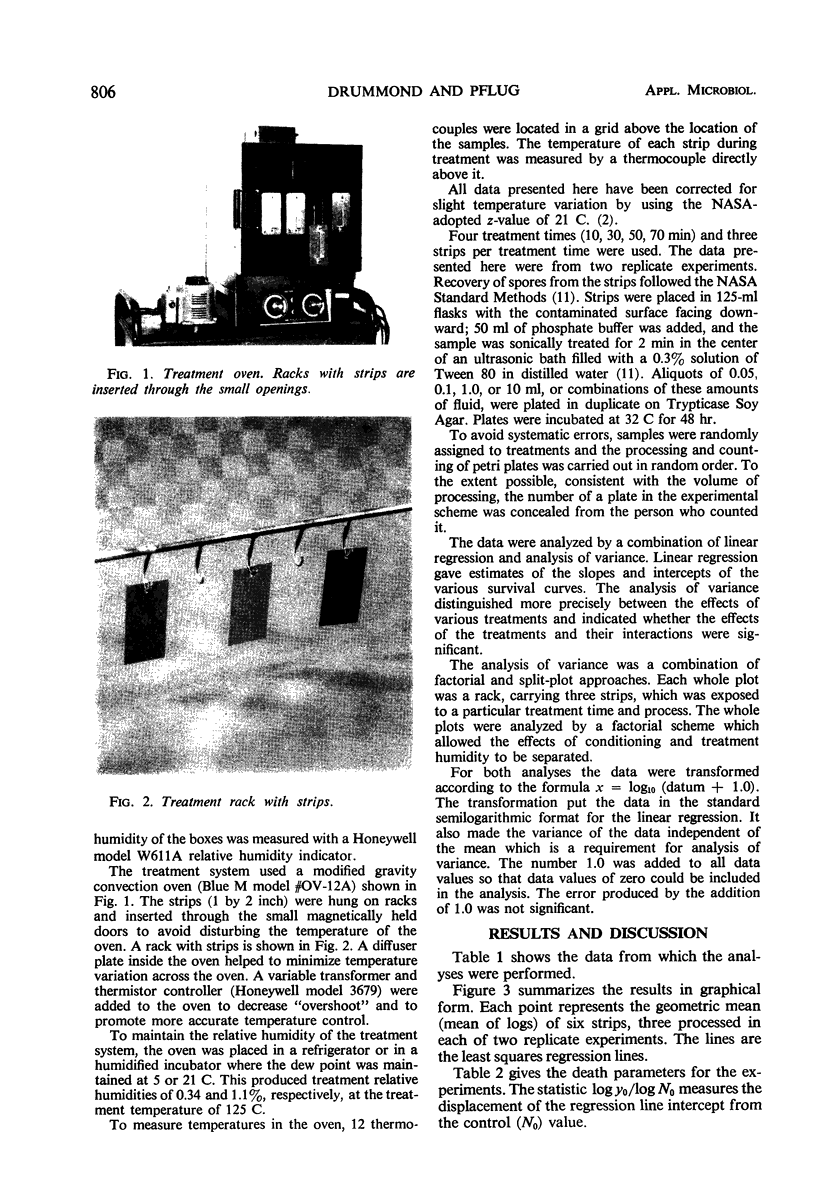
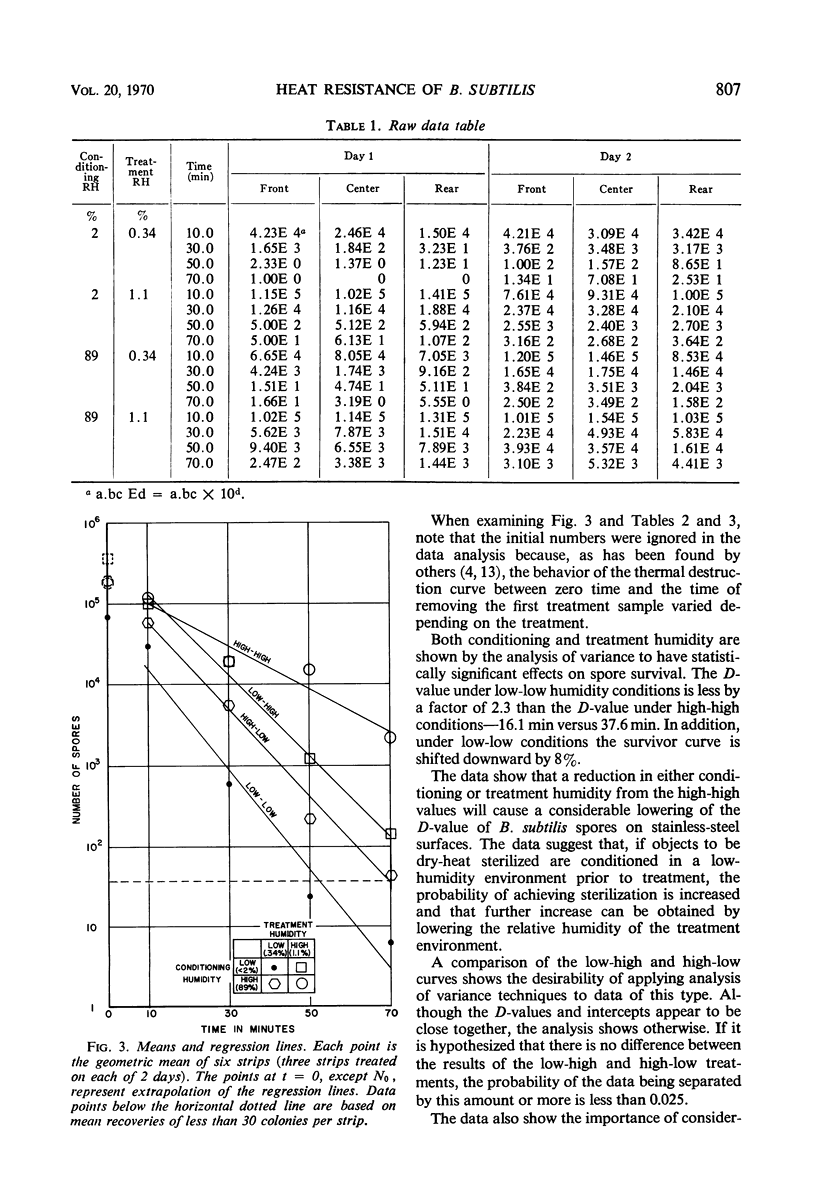

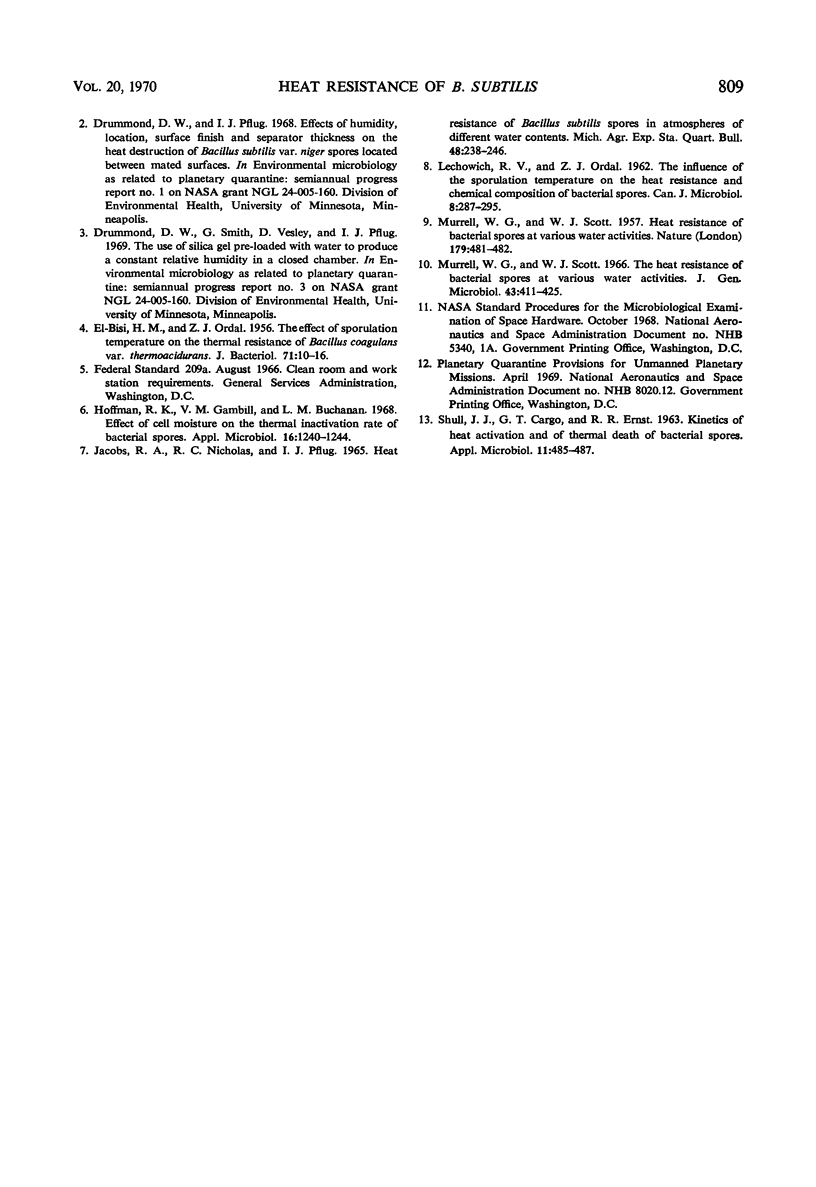
Images in this article
Selected References
These references are in PubMed. This may not be the complete list of references from this article.
- Angelotti R., Maryanski J. H., Butler T. F., Peeler J. T., Campbell J. E. Influence of spore moisture content on the dry-heat resistance of Bacillus subtilis var. niger. Appl Microbiol. 1968 May;16(5):735–745. doi: 10.1128/am.16.5.735-745.1968. [DOI] [PMC free article] [PubMed] [Google Scholar]
- EL-BISI H. M., ORDAL Z. J. The effect of sporulation temperature on the thermal resistance of Bacillus coagulans var. thermoacidurans. J Bacteriol. 1956 Jan;71(1):10–16. doi: 10.1128/jb.71.1.10-16.1956. [DOI] [PMC free article] [PubMed] [Google Scholar]
- Hoffman R. K., Gambill V. M., Buchanan L. M. Effect of cell moisture on the thermal inactivation rate of bacterial spores. Appl Microbiol. 1968 Aug;16(8):1240–1244. doi: 10.21236/ad0835496. [DOI] [PMC free article] [PubMed] [Google Scholar]
- LECHOWICH R. V., ORDAL Z. J. The influence of the sporulation temperature on the heat resistance and chemical composition of bacterial spores. Can J Microbiol. 1962 Jun;8:287–295. doi: 10.1139/m62-040. [DOI] [PubMed] [Google Scholar]
- MURRELL W. G., SCOTT W. J. Heat resistance of bacterial spores at various water activities. Nature. 1957 Mar 2;179(4557):481–482. doi: 10.1038/179481a0. [DOI] [PubMed] [Google Scholar]
- Murrell W. G., Scott W. J. The heat resistance of bacterial spores at various water activities. J Gen Microbiol. 1966 Jun;43(3):411–425. doi: 10.1099/00221287-43-3-411. [DOI] [PubMed] [Google Scholar]
- SHULL J. J., CARGO G. T., ERNST R. R. KINETICS OF HEAT ACTIVATION AND OF THERMAL DEATH OF BACTERIAL SPORES. Appl Microbiol. 1963 Nov;11:485–487. doi: 10.1128/am.11.6.485-487.1963. [DOI] [PMC free article] [PubMed] [Google Scholar]




